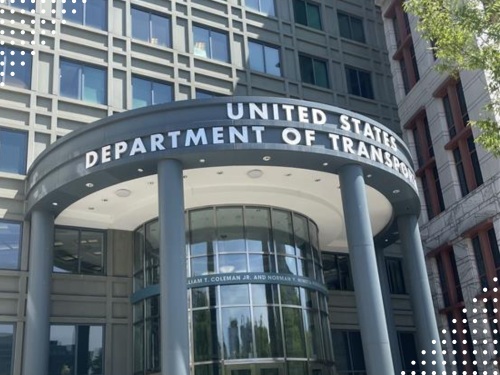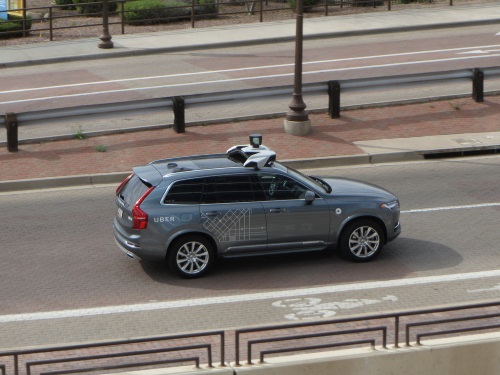The National Highway Traffic Safety Administration recently issued what it calls a “first-of-its-kind” final rule to ensure the safety of occupants in automated vehicles. This rule updates the occupant protection Federal Motor Vehicle Safety Standards or FMVSS to account for vehicles that do not have the traditional manual controls associated with a human driver; instead governed by automated driving systems or ADS.
[Above photo by Uber]
“As the driver changes from a person to a machine in ADS-equipped vehicles, the need to keep the humans safe remains the same and must be integrated from the beginning,” explained Steven Cliff, NHTSA’s deputy administrator, in a statement. “With this rule, we ensure that manufacturers put safety first.”

Previously, NHTSA said occupant protection standards covered only “traditional” vehicle features, including steering wheels and other manual controls. The agency’s new rule now updates the standards to clarify what is required of manufacturers when applying the standards to ADS-equipped vehicles without traditional manual controls.
For example, the new rule clarifies that, despite their innovative designs, vehicles with ADS technology must continue to provide the same high levels of occupant protection as current passenger vehicles.
That relates to a Standing General Order NHTSA issued in the summer of 2021 that requires crash and incident reporting for vehicles equipped with ADS or certain advanced driver-assistance systems, to help the agency quickly identify any potential defect trends that could emerge in such automated systems.
Concurrently, NHTSA also finalized a new rule that would improve equity and mobility for drivers and passengers with disabilities. That final rulemaking allows three specific modifications to vehicles to allow for adaptive equipment.

The first allows rental car companies to disable temporarily a driver’s knee bolster air bag to install hand controls for people with disabilities. Should they deploy in a crash, knee bolster air bags could interfere with the safe use of physical hand controls.
The second modification permits the installation of rear-mounted transporters for wheelchairs and power scooters, while the third change allows vehicle modifiers to raise the height of a vehicle’s roof to accommodate drivers and passengers with disabilities.
Federal law generally prohibits a manufacturer, distributor, dealer, rental company or motor vehicle repair business from knowingly disabling any part of a device or element of design installed on or in a motor vehicle. By issuing specific exemptions that balance mobility and safety, NHTSA allows motor vehicle dealers and repair businesses to improve the mobility of drivers and passengers with disabilities.
“Everyone deserves equitable access to safe transportation and this rule will remove certain obstacles that have prevented people with disabilities the freedom to travel safety and comfortably,” noted NHTSA’s Cliff in a separate statement.
“We are wholly committed to improving everyone’s safety by integrating the needs of all road users – not just drivers and passengers but pedestrians, cyclists, children, older Americans, and people with disabilities,” he said.
 Top Stories
Top Stories
USDOT Makes $1.5B Worth of BUILD Grants Available
December 19, 2025 Top Stories
Top Stories

